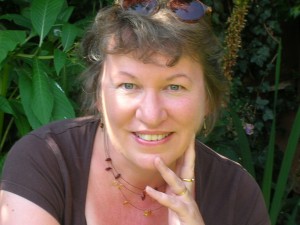
Siobhan Dowd received the Carnegie Medal for her novel Bog Child and is the first author to have won it posthumously.
I first became aware of Siobhan Dowd after having a colleague force a copy of The London Eye Mystery into my hands and tell me to read it or else. I only found out later that she had passed away, but not before writing several other truly amazing books.
TheSiobhan Dowd Trust is the dying bequest of the celebrated children’s author Siobhan Dowd. Just before her tragic death from cancer in August 2007 she personally and energetically supervised its foundation, to support, in all ways possible, disadvantaged young readers in the UK and Ireland. It was one of the very last things on Siobhan’s mind and clearly for her the most pressing cause in our society today.
The aims of the trust are simple and direct:
To take stories to our children without stories.
To bring the joy of reading to our children deprived of reading.
To bring books to our children deprived of books.
To fund disadvantaged readers where there is no funding, and to support disadvantaged readers where there is no support.
To fund and support any persons or organizations who help disadvantaged young readers.
The Trustees believe that the best and truest way faithfully to observe Siobhan’s last wish is to invite applications from persons or organizations in the UK or Ireland who need funding to directly help disadvantaged young readers. The Trustees will take a few months to consider and evaluate applications and then begin to disburse awards in the way that best seems to follow Siobhan’s wishes.
By the terms of Siobhan’s will, all royalty income derived from her published novels and any posthumously published work will go to the Trust.
The Trustees believe that Siobhan’s generosity will be the seed of something much larger, and so the Trust also welcomes donations from the public. The aspiration is to help as many disadvantaged young people as possible.
The Trustees are in no doubt of the importance of this bequest and its fundamental urgency for our children and for the future culture of the British Isles and Ireland. We may think we live in a literate society but, as Siobhan was well aware, there are too many places in our own ‘house’ where children are denied the opportunity to read. This is a charity that must begin at home, a home that, like Siobhan’s life, spans both sides of the Irish Sea.
A brief note on Siobhan:
Siobhan spent most of her career looking after writers. Working for PEN she fought to help writers silenced by oppressive regimes around the world. Closer to home, she did all she could to get reading material into the hands of disadvantaged young people from all walks of life, Siobhan co-founded and then ran the Readers & Writers Programme for English PEN which encouraged disadvantaged children to read by sending books and writers into schools as well as working with other institutions such as prisons. Siobhan also encouraged youngsters from the Romany culture to record their history. Her support for, and encouragement of, her fellow-writers was inexhaustible.
In some ways perhaps she sacrificed her own brimming talent for the benefit of other authors. And then, just as she discovered she was fatally ill, she put pen to paper and produced four of the most remarkable novels for children you could wish for. She was a writing phenomenon. The overriding thought of all those who knew her work is that her loss to the world of children’s writing is a tragedy. It is utterly characteristic that Siobhan should, at the end, put her mind unerringly to the most deserving group of all: the young reader. Siobhan realized that our literary culture – critics, bookshops, agents, publishing, libraries, schools – depends ultimately on the reader. And, of readers, the young reader is the most vulnerable. And amongst young readers, the disadvantaged young reader is the most deprived of all. Siobhan, at the last, and with all her usual clarity, decided to help them. And you can help them too.
The Siobhan Dowd Trust Books
A Swift Pure Cry
The London Eye Mystery
Bog Child
Solace of the Road
The Trustees
Tony Bradman
Rachel Billington
Polly Nolan
David Fickling
Rachel Billington
Siobhan has the number one gift of gripping you from the first page and not
letting you go till the final, always satisfying, last page. Her gift for
fabulous characterisation, however small the role, combines brilliantly with
original and carefully constructed plot-lines. Always believable, she yet
raises the drama to a frighteningly intense level. Hardest act of all, she
manages to keep up the humour even when the going gets tough. Solace with all
her gripes and bravery, is a fitting heroine for our times. Yet again, hooray
for another Siobhan Dowd masterwork!
Fiona Dunbar
Siobhan inhabits her characters so completely, you feel you know them. In
Holly, she has done it again; here is someone whose wit and humour carries
her through the hardest of times, and whose journey of self-discovery is both
poignant and heart-warming. A delight.
Jonathan Heawood, Director, English PEN
‘Siobhan Dowd believed passionately in the power of writing to change
people’s lives. She brought this passion to her work for PEN over many years,
whether defending writers in prison or promoting literature in schools. It’s
inspiring and moving to see her work continuing even now.’